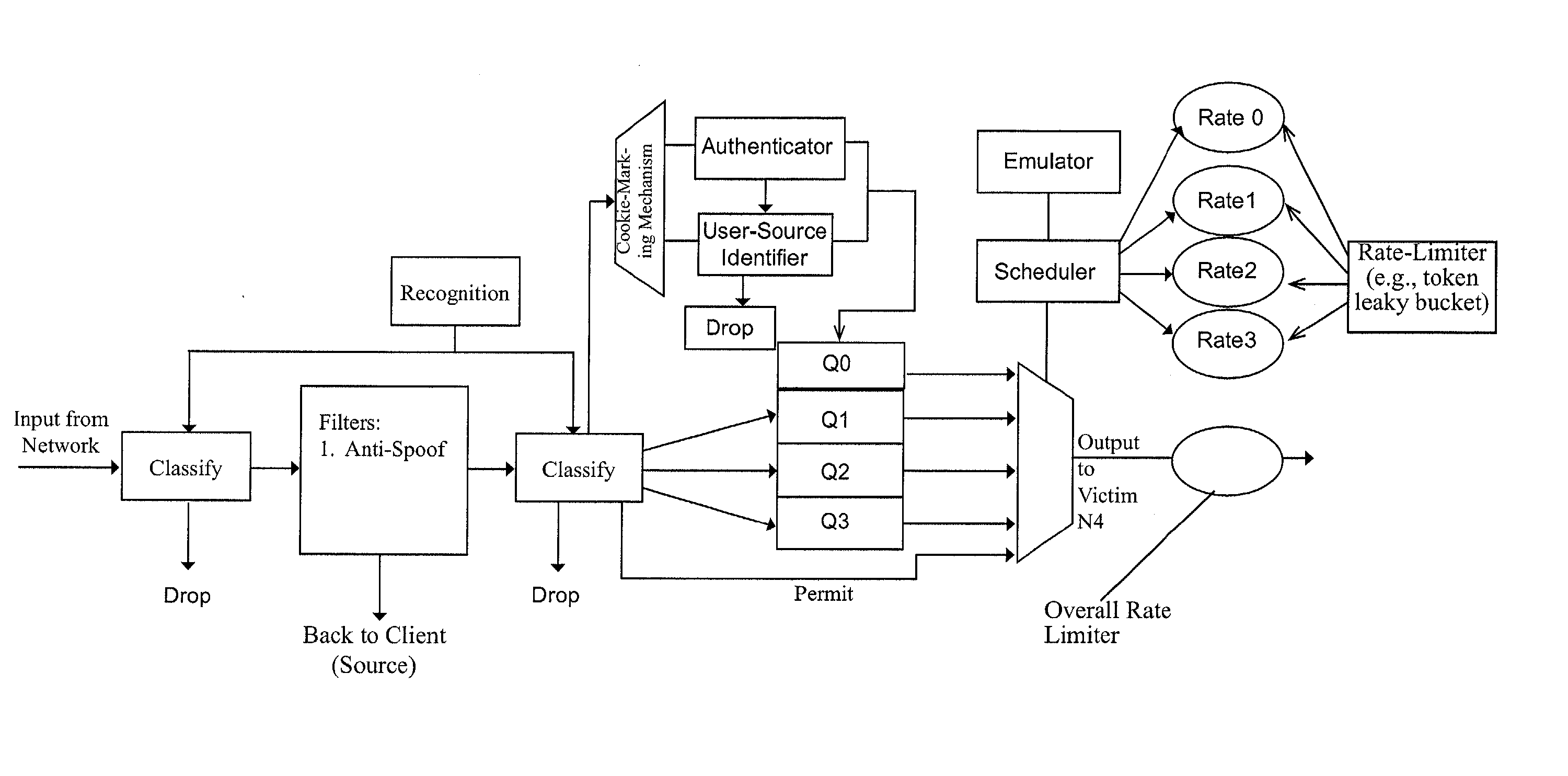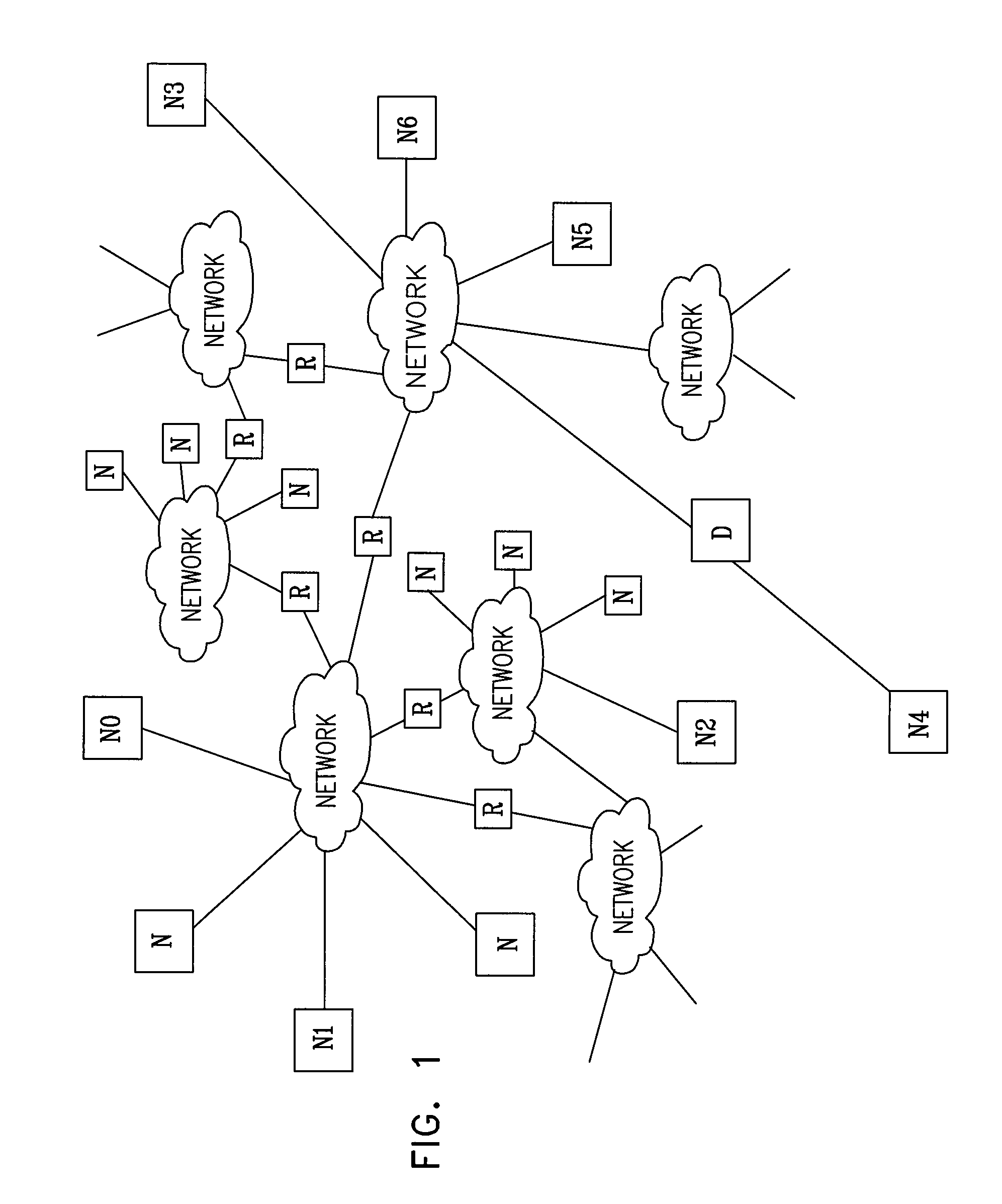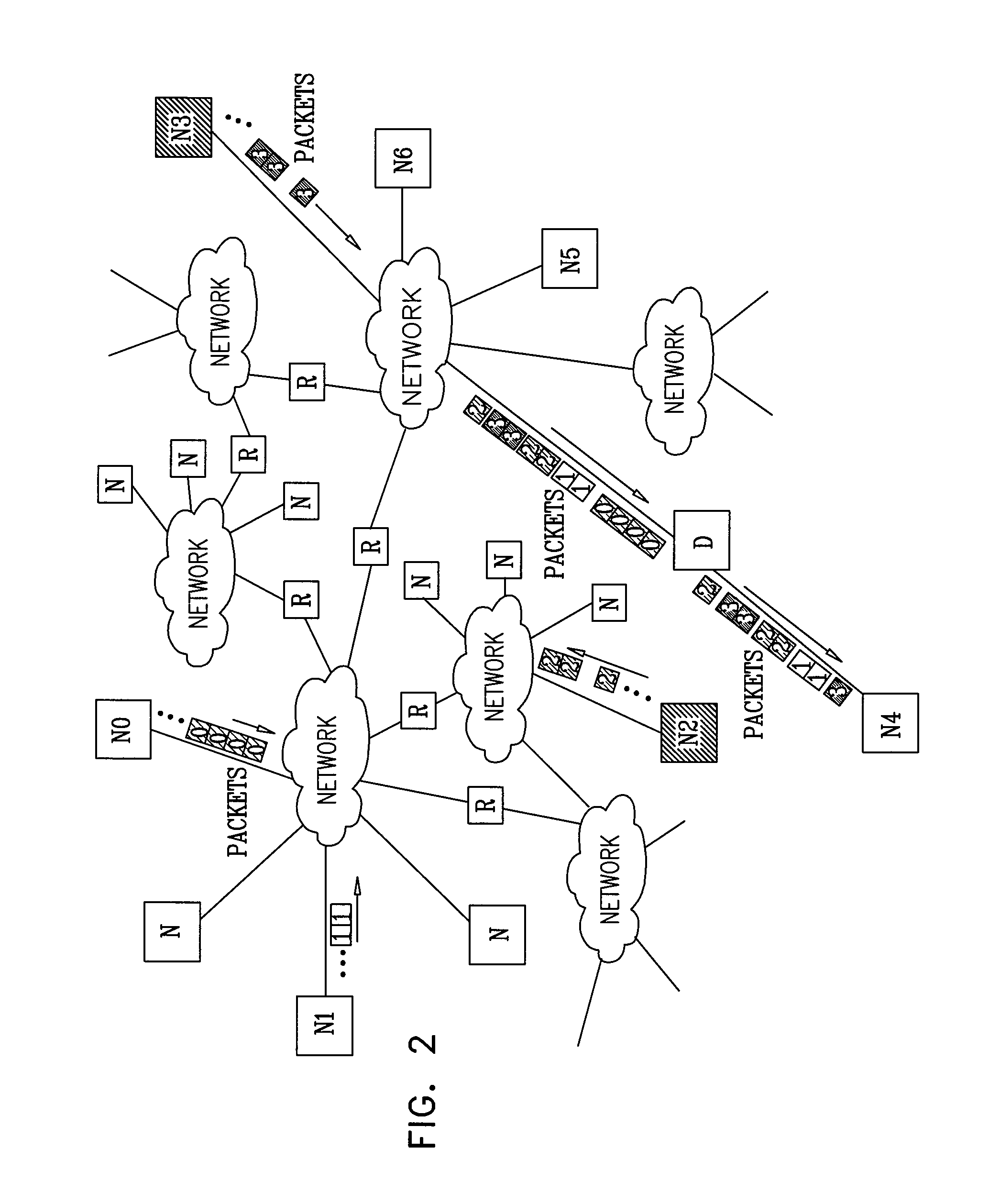Weighted fair queuing-based methods and apparatus for protecting against overload conditions on nodes of a distributed network
a distributed network and queuing technology, applied in the direction of electrical equipment, digital transmission, data switching networks, etc., can solve the problems of no known online solution for protection against overload conditions, inaccessible to the public, subject to outages and espionage, etc., and achieve the effect of enhancing protection against overload conditions
- Summary
- Abstract
- Description
- Claims
- Application Information
AI Technical Summary
Benefits of technology
Problems solved by technology
Method used
Image
Examples
Embodiment Construction
[0050]Terminology
[0051]Information transfers on the Internet are broken into variable size packets, each of which contains, in addition to its data (payload), control information to be used for its routing and scheduling over the network. In the sections that follow, the terms below are used in the conventional sense (also provided below), except where otherwise evident from context, to characterize information transfers of the Internet and, more generally, over IP networks.[0052]IP address: A 32 bit label that uniquely identifies a device.[0053]TCP / IP port number: A 16 bit label that uniquely identifies an application within a device.[0054]Packet Labels (Identifiers): Each IP packet is labeled by the following five labels: 1) Source IP address, 2) Source TCP / IP port number, 3) Destination IP address, 4) Destination TCP / IP port number, and 5) Protocol type. These labels are used by TCP / IP for controlling and routing the packet.[0055]IP connection: A source application / destination ap...
PUM
 Login to View More
Login to View More Abstract
Description
Claims
Application Information
 Login to View More
Login to View More - R&D
- Intellectual Property
- Life Sciences
- Materials
- Tech Scout
- Unparalleled Data Quality
- Higher Quality Content
- 60% Fewer Hallucinations
Browse by: Latest US Patents, China's latest patents, Technical Efficacy Thesaurus, Application Domain, Technology Topic, Popular Technical Reports.
© 2025 PatSnap. All rights reserved.Legal|Privacy policy|Modern Slavery Act Transparency Statement|Sitemap|About US| Contact US: help@patsnap.com



